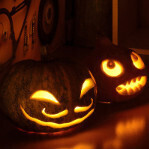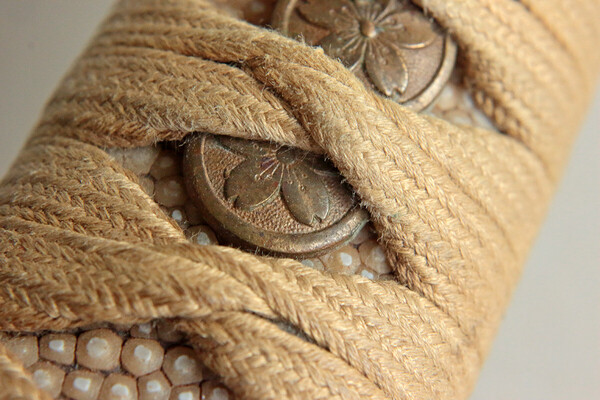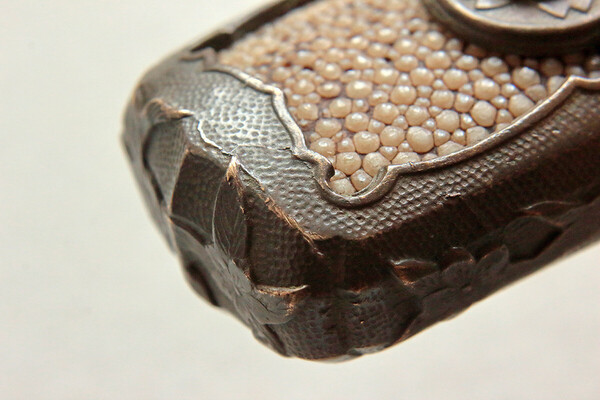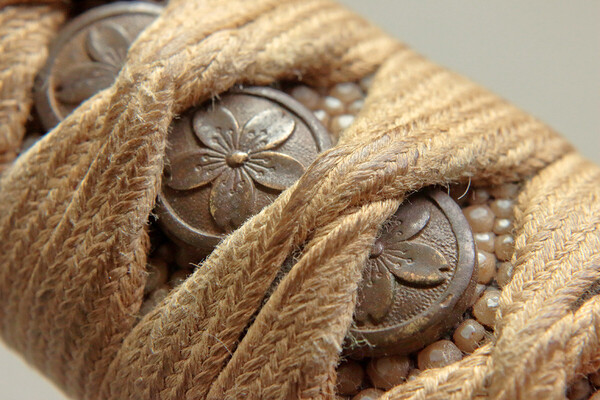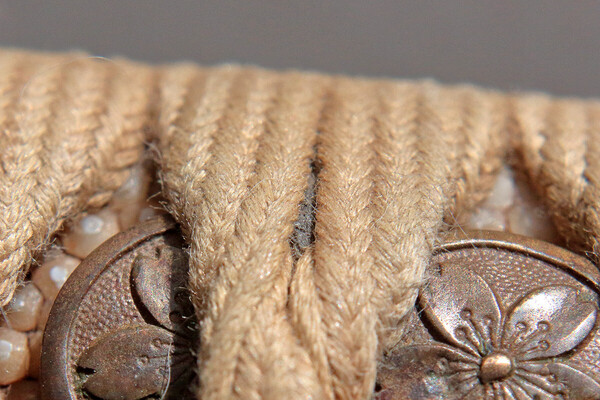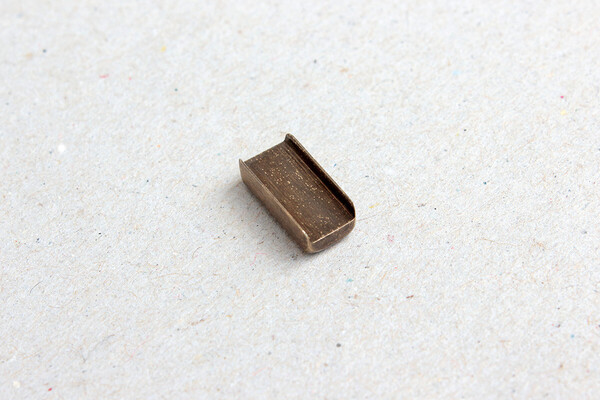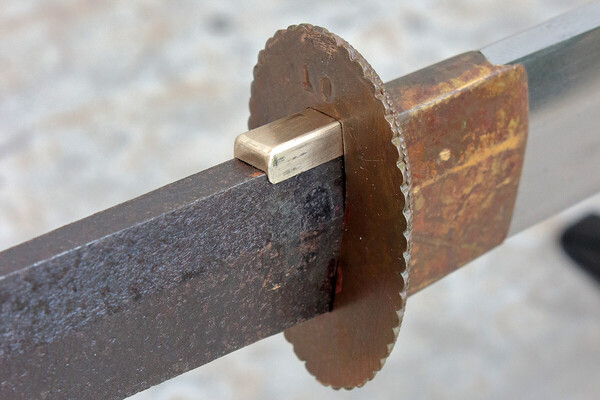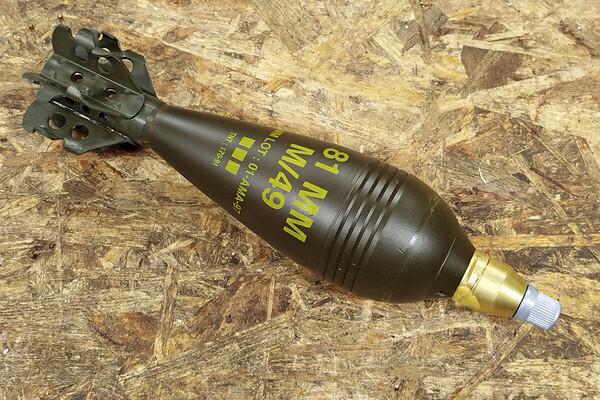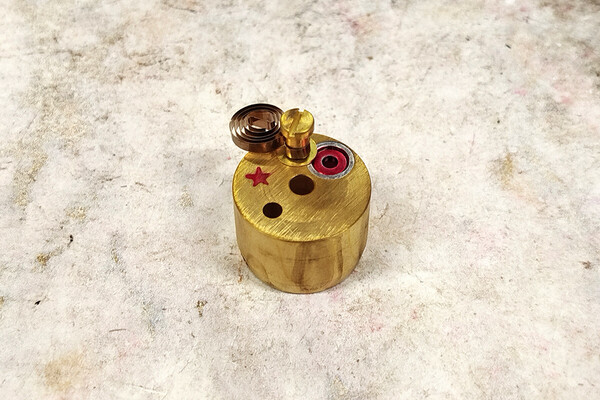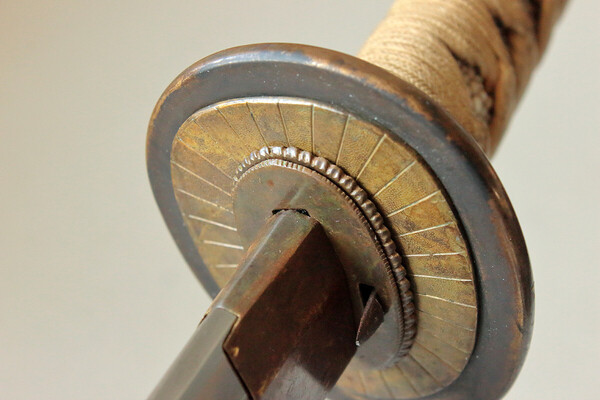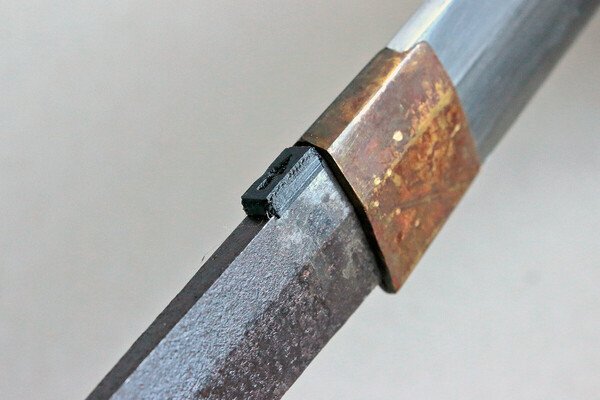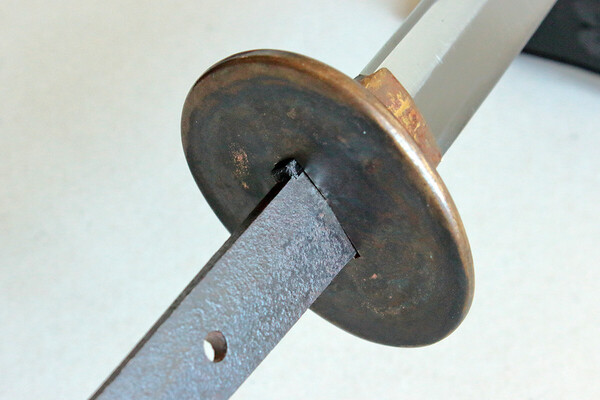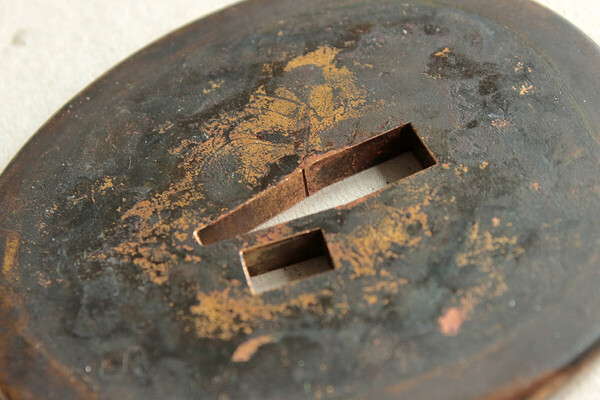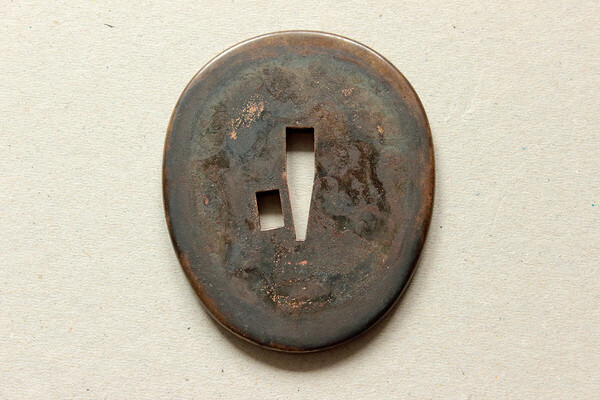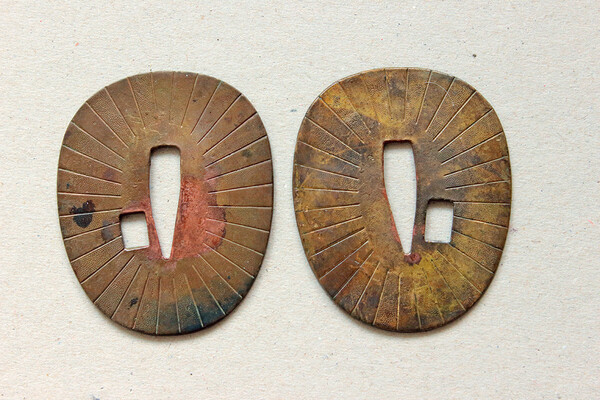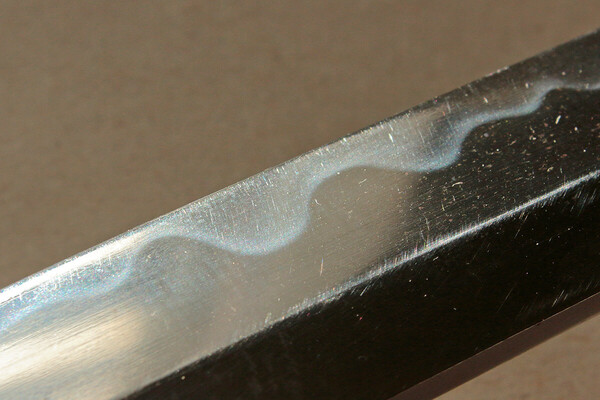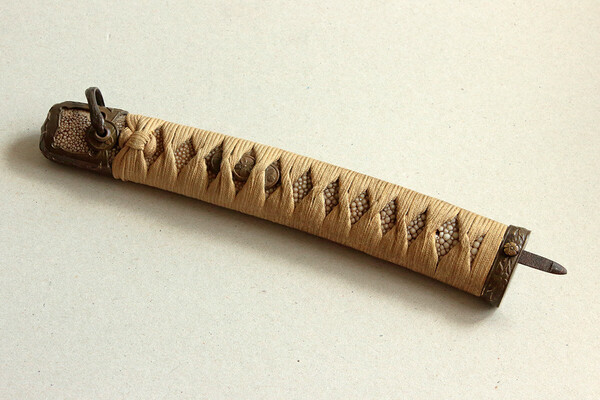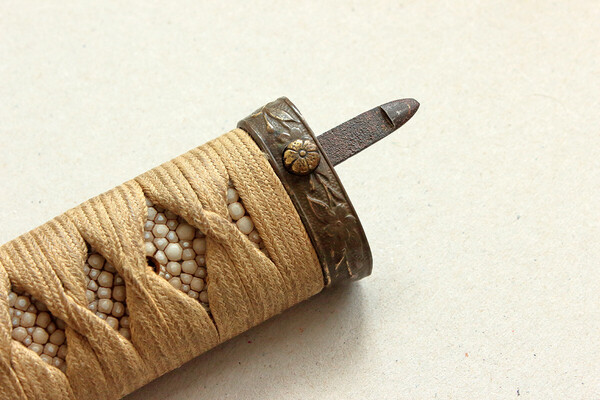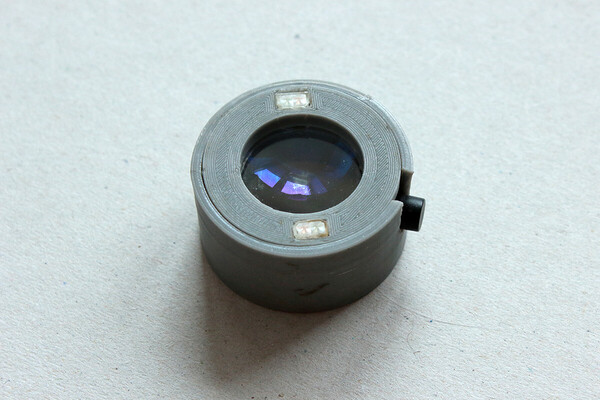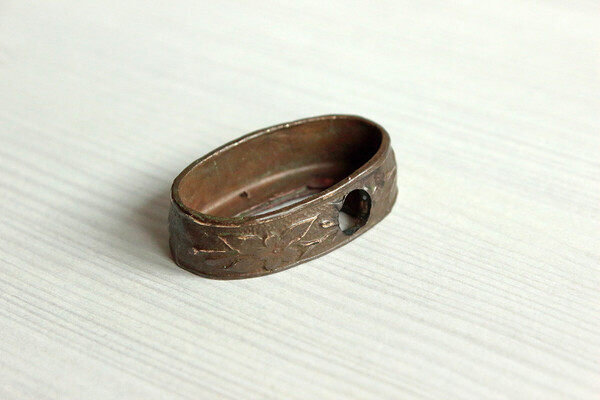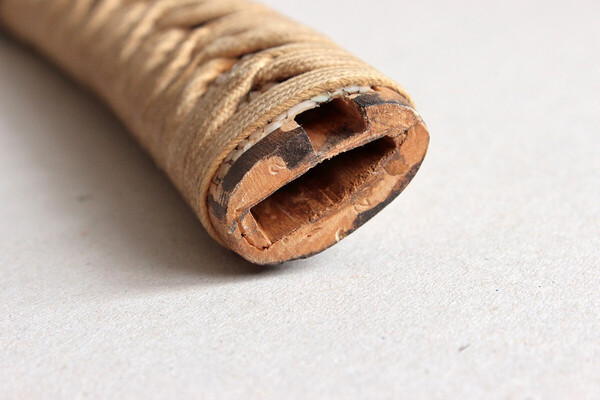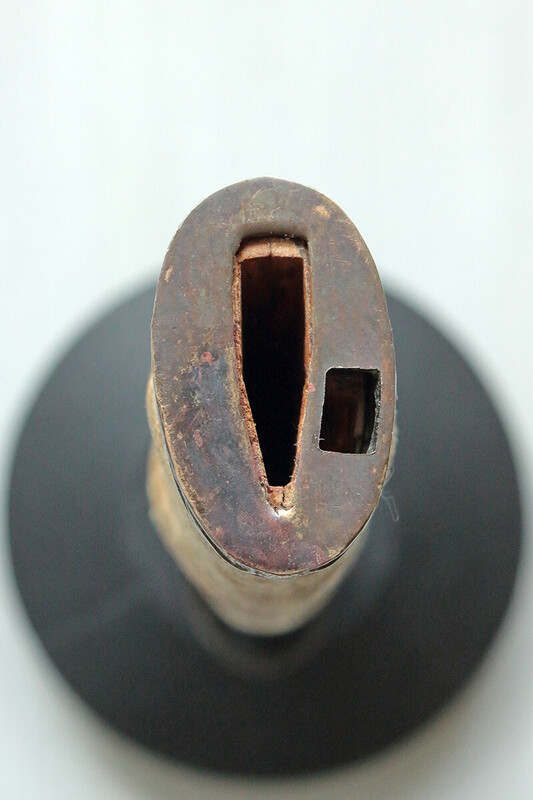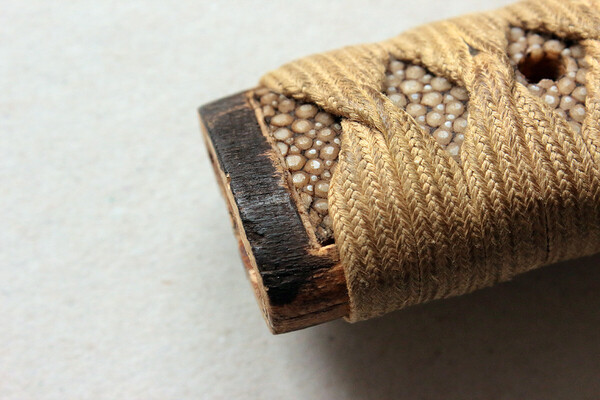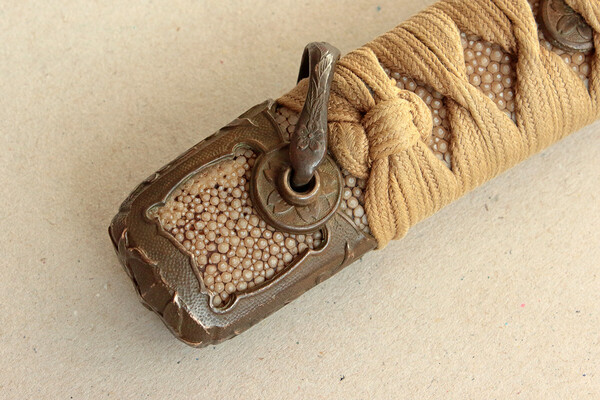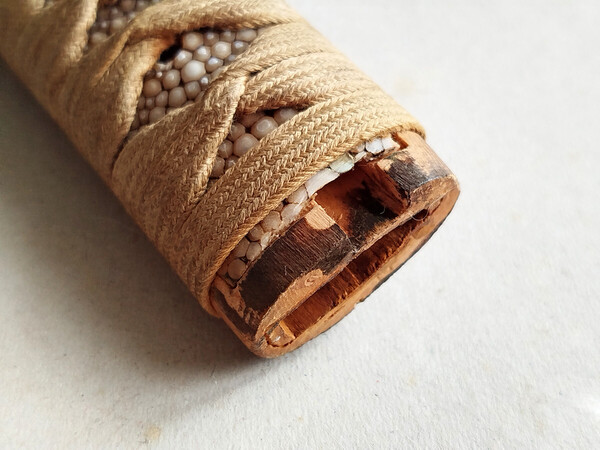-
Posts
82 -
Joined
-
Last visited
Content Type
Profiles
Forums
Events
Store
Downloads
Gallery
Everything posted by Nazar
-
-
With this setup I could shoot some nice closeups of the sword. Here are some photos I took just for sake of the aesthetic of things.
-
Lately I visited a local home improvement hypermarket to buy some tools and supplies. In the tools section I came across some magnifying glasses. The ones with handles and plastic frames. Bought me a glass marked X4 with a 75mm lens. Cost me $4. Turned out to be a nice thing to take a closer look at my sword and dirks. Pretty soon I found I could shoot closeup photos through it. Like this photo of ito with hishigami visible through the gap or another one with hamon. In no time I dismantled the magnifying glass and left only the lens with the inner parts of the frame (they are glued to the lens anyway). Then it was time for the caliper, thread gauge and some 3D modeling. one I finished designing, I 3D printed an adapter that encased the lens from magnifying glass and could be screwed to my camera lens in place of a filter.
-
Thank you Bruce! Yeah, that's a great feeling. Used to have such feelings back then when I was working in my workshop on my projects. Also I like the process itself. I have some skills and I am used to working with metals. And even as these skills are far from Japanese edged weapons, they serve me right especially when it comes to the "what not to do" area. :-) Also my son was always very interested in history, especially during the Great War period. His specific interest is the Austro-Hungarian Empire. So we started to collect belt buckles and kappenabzeichen-s (cap badges). And as the Eastern Front went right through Ukraine one could find some WWI relics here. When it comes to belt buckles that are present on local auctions, they are usually metal detected and dug on the sites of battlefields. So most of them are bent and corroded. Not long before the war I started to buy them and experiment with restoration. I worked out my methods. I cast lead weights of different configurations and used them for hammers, while rubber plates served me for anvil. In this way I straightened brass buckles without scratching them. I learned a bit about how to clean brass and how corrosion eats it. I believe I got a bit of understanding of what to do and what is more important - what not to do with old brass.
-
And last but not least. At the end of the process my foure pawed helper became mighty tired, so she went for a nap at her favorite spot.
-
The fitt is nice and tight. As you may see, there is a little space for the rearmost seppa. The wedge is just long enough to accommodate a whole package of seppas and tsuba. Thus, with tsuka installed, the whole set has the minimum freeplays. After I finished the wedge, I decided to make it look less new and shiny. Here is the result. not the best, but still fair enough for a 20min job.
-
I already had all dimensions, so it took only a couple of hours of work to shape a new brass wedge. I used simple tools like vises, a small hacksaw, a set of small files and a couple round sheets of automotive sandpaper from the local market. Another hour I spent making final adjustments, filing edges and sandpapering the wedge. I recreated all features of my original design, including tiny ridges that keep the wedge centered on the nakago. The foremost seppa has the smallest nakago-ana, so it has to be installed before the wedge. Then the wedge fixes it in the proper position. Then all other seppas and tsuba may be installed.
-
Well, 3D printing is great technology and I utilize a lot of it these days. Yet, I somehow wasn't satisfied with the 3D printed wedge. My thought was that a brass wedge would suit this old sword better. It's not a big dial to find a suitable piece of brass like a brass bolt (or its head), however my belief was it has to be war brass. For me, there is some symbolism in using brass from the war that already took three years of my life for the sword from WWII. I found a suitable piece of brass in a fuse for an 81mm mortar shell. This fuse is made mostly of brass. So I dismantled this fuse and used initiator housing as a source of material for my wedge. Don't worry about the mortar shell. It (as many before) will be used with more precision than any 81mm mortar could achieve.
-
The thing is barely visible from outside when the sword is assembled. And as I was working on this "wedge" of mine I just remembered one thing. While I was cleaning the nakago from the fresh rast, I noticed a streak of golden colour on the hamachi side of the nakago. I took a close look and it was like a brass spot on the surface. Alas, I failed to document it. It was small but its location corresponded to the place where the tsuba touches the nakago once the adjusting bar is installed. It makes me think that at some point tsuba may have some prolonged friction with nakago. Now I wonder if it could be that some kind of wedge similar to mine was installed earlier, before the nakago got fresh rust?
-
However, I had to admit that the nakago-anas of the whole set are definitely too big for the nakago of this sword. Once I finished with tsuba and seppas cleaning (though some additional cleaning may be done later) I turned my mind to the issue of excessive lateral freeplay. It turned out that a simple flat bar of certain dimensions makes tsuba and seppast to fit the nakago pretty snug. I took some dimensions using a caliper, made a simple model and 3D printed bar. Then I made some adjustments and added a couple of ridges to the edges of the bar. These ridges are pretty thin, their thickness is around 0.5-0.6mm, but they keep the bar centered on the nakago. However, the fit of tsuba and seppas are tight even when the bar has no ridges. Here how it looks:
-
The only marking on it is a "-" in nakago-ana. It may indicate that tsuba and seppas are from different sets, yet, the shape and size of nakago ana in tsuba and seppas are very similar. So they may be from one set.
-
Tsuba took less damage than seppas because of its coating. It seems to be double coated: a golden coating could be seen under the black one. Here it is before and after cleaning.
-
All seppas have number 10 on their rear sides. Front rising sun seppa apparently was gilded, or coated by some type of golden coating. As for the rear O-seppa, I couldn't say for sure if it was "gilded" or not. Smaller seppas have a king of greyish lacquering on them. It could be seen from a certain angle.
-
-
As for the tsuba and seppas, they tell the story of why nakago was so rusty. Tsuba, seppas and fuchi, they all have spots on them that are the result of some kind of leakage. I believe the sword was stored improperly for some time, so condensation formed on the nakago. Then moisture started leaking toward habaki. This process continued for some time. Luckily, it didn't kill tsuka. However, nakago got fresh rust and seppas got corroded spots. In these spots zinc from the copper-zinc alloy turned into rust. I gently cleaned all the components. Alas, red spots are unavoidable things when zinc is eaten from brass by corrosion. I could blacken the spots, but I think I'd better leave them as they are, since they are a part of sword' history. The only place where I let the intrusive thought win is fuchi. As you may see from my previous posts, I blackened the red spot there. Here are some photos of seppas in "before and after cleaning" style.
-
Thank you Michael! So let's continue the story. Little could be said about habaki. It's of plain design and has number 2 stamped on it. It has some scratches and patina. I only removed grim from outside and green stuff from inside.
-
To shoot photos of objects I am working on is an old habit of mine from life before the war. And this habit kicked in back in no time, that's why I post so many photos. However, at some stage of work I grew annoyed with photos I could get using my phone camera. When I was leaving for the war I left spare keys from my workshop and my apartments to one friend of mine. So I asked him to get my old Canon EOS650D from my workshop and send it to me. It's an old camera and before the war I was thinking of replacing it with a new one. But alas for all old plans. However, even with standard 18-55mm lens this camera still could do things that my phone could not. Also it turned out that even after three years of not using that camera my fingers still remember all buttons and deals. Once I got my camera I re-shoot a big deal of photos. However, some photos couldn't be re-shooted, like photos of parts before cleaning. Some photos taken by phone camera I considered to be good enough. So what you see here is a mix of phone and camera photos. Also I have to admit that shooting photos of Japanese swords is kind of a pleasure and challenge at the same time. Other evening I was oiling the blade and some evening sunshine was gettin through half closed roller blinds. And I was turning the blade this and that way and hamon was catching light. Sure, I couldn't help myself to shoot some photos.
-
So, while cleaning tsuka, I cleaned only metal parts. I was afraid to do any damage to ito, so I barely touched menukies. To clean them I used a narrow nylon brush from one of my weapon cleaning kits and a slightly modified nylon brush for Dremel (used it by hand of course). Like how tsuka looks.
-
If you mean wooden liners inside of tsuka on mune and ha sides, then no, there are no liners. To make sure I used a contraption like this: It's a combination of a lens and two small LEDs. The guy from my crew made it and uses it to examine electronic components and some other things on equipment we are working with. So I borrowed it to study the sword. Very useful. The outline that is carved around actuale hole is deep, but as far as I could see the pattern of wooden grain is the same inside and outside of that outline. So I believe there is no liner inside of tsuka. Also I noticed that the outline has needle holes on every corner. I think this is the result of using some kind of template tool that was driven into tsuka' fuchi end. I ran a search on this very forum, ebay and google for pictures of tsuka fuchi end. As far as I found out it is not that common when this carved outline could be found and usually they more or less correspond to the actual hole. So the whole situation with it is unusual. Taking into account that the components like samegawa, ito and hishi-gami look to be of correct age, I think it was a job made to client order.
-
I inspected tsuka from inside using a small light. There is only one hole for mekugi. There are no signs of a "doctored" hole. Also tsuka fits nakago perfectly. I have no doubts that it belongs to this very blade.
-
The chuso didn't look great. Luckily, the corrosion wasn't too deep. I cleaned it gently up to remnants of copper plating. Then I oiled it. Note the same number 2 as on nakago and tsuka. Fuchi after some cleaning. Copper plating is intact, but still has some small amount of green goo on it.
-
However, even as nakago and tsuka stamped with number 2, I still think fuchi may belong to this blade and its tsuka. If you take a look at the fuchi end of tsuka you may notice that it has quite deep markings on it. These markings correspond to the shape of fuchi' nakago-ana. It seems that this carved shape was used for general centering. In this photo one may notice additional markings made with paint (or pencil) by which the actual cut-out for the blade was made. so it looks like fuchi actually belongs to this tsuka.
-
The only remnants of gilding that may be found on tsuka are on menukies. Fuchi looked even slightly worse. Worked on it too. Discovered it has the number 315 on the inner side.
-
- Side panels made of rayskin and it seems they have never been painted in black. The dark stuff between scales is of brown colour and I believe it is natural for old rayskin. At least I could see the same thing on the handle of one of my Navy dirks. The only thing that may be typical for kai-gunto tsuka is remnants of black paint on the fushi end of tsuka wooden core. However, there is no paint in crevices between rayskeen and wood. So either tsuka was completely refurbished: stripped to the wooden core, then new panels were installed and new wrapping made or it was like this from the very start. The second possibility gave me my silly idea that tsuka was custom ordered like this from a fitting workshop and was made for the blade that was provided by the owner. The overall condition of tsuka is great. I liked it so much that I was thricely careful when I was cleaning kabuto-gune. Nothing remained of its gilding, if there was such. only copper plating remained. And copper started to develop a green patina, which according to my beliefs has no place on elements of sword. So I carefully removed it. It still remains in some small nooks, but later on I'll get rid of it too.
-
Thank you Bradley, That's why I got confused. From one side the sword has typical features for war blades, from another, there is this hamon and wear of the blade. And so much for my limited knowledge: somehow I got myself under the impression that a non traditionally made blade wouldn't have water quenched hamon. And yes, yet one feature that gave me an idea of a non-standard sword was tsuka with ito of light colours and non-painted ray skin panels. I studied it mostly closely trying to figure out if it was refurbished. The facts are as follows: - Tsukamaki style is tsumami-maki whis is one of the correct styles for Kai-gunto. Like it very much, by the way. - Condition of Ito corresponds to its age, so I believe it wasn't rewrapped. - Hishi-gamis look to be made of black washi paper Have to use contraption with additional lense and light to shoot this photo:-)


